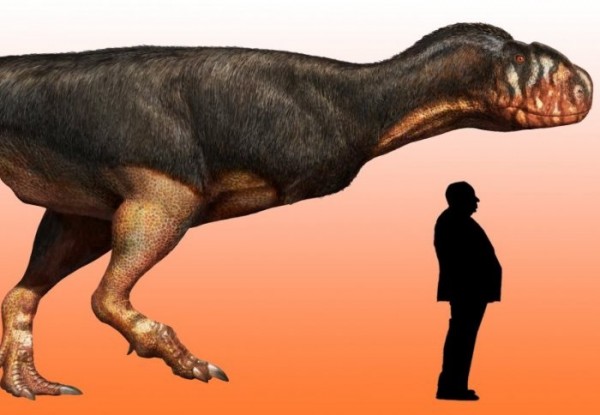By Ana Verayo, | March 02, 2016

Fossil reveals the fearsome size of the odd looking, flesh eating abelisaur.
An ancient femur bone fossil belonging to a massive dinosaur that was uncovered recently by researchers revealed how terrifying these large predators can get.
Scientists from Imperial College London examined and analyzed a femur that appears to belong to an abelisaur, that existed some 95 million years ago during the the late Cretaceous. This particular specimen measured around 29.5 feet long, weighing almost two tons and could also be the biggest of its kind that was ever discovered.
Like Us on Facebook
According to author of the study, Alfio Alessandro Chiarenza from the Imperial College London, prior studies revealed that smaller bone specimens of the dinosaur were uncovered before, however, this new specimen provides real evidence of how large this carnivorous predator can get.
He describes the dinosaur as appearing a bit odd, as it was probably covered with feathers and small forelimbs that seem useless, but they were indeed fearsome killers during their rule of the Earth.
These abelisauridae dinosaurs have been considered as strange in appearance as they have extremely small forelimbs that seem to be just dangling aimlessly from their torso, along with deep facial features on a short face, including fluffy feathers, but researchers say that they possess large, powerful hind limbs and razor sharp teeth that can tear easily through flesh.
These dinosaurs used to dwell in northern Africa along savannahs with rivers and mangroves that are considered to be ideal hunting grounds for dinosaurs in hunting larger fish and crocodiles and smaller dinosaurs.
Scientists have found the femur in Morocco in a place known as Kem Kem Beds which is a location known to be a hotbed for dinosaur remains. Researchers were also baffled as to how abelisaurs co-existed with other carnivorous dinosaurs in this outcrop without eating each other into extinction.
However, in this new study, researchers suggest that this coexistence seems to be muddy, as harsh geological and environmental conditions in the region at the time could have mixed up the fossil records along with their timelines. Researchers also say that the abelisaurs and other predator dinosaurs may not have shared the same regional habitat during the same period.
Chiarenz adds that these creatures could have possibly lived far away from one another, where they chose different types of environments for their habitats. This new study is published in the journal PeerJ.
-
Use of Coronavirus Pandemic Drones Raises Privacy Concerns: Drones Spread Fear, Local Officials Say

-
Coronavirus Hampers The Delivery Of Lockheed Martin F-35 Stealth Fighters For 2020

-
Instagram Speeds Up Plans to Add Account Memorialization Feature Due to COVID-19 Deaths

-
NASA: Perseverance Plans to Bring 'Mars Rock' to Earth in 2031

-
600 Dead And 3,000 In The Hospital as Iranians Believed Drinking High-Concentrations of Alcohol Can Cure The Coronavirus

-
600 Dead And 3,000 In The Hospital as Iranians Believed Drinking High-Concentrations of Alcohol Can Cure The Coronavirus

-
COVID-19: Doctors, Nurses Use Virtual Reality to Learn New Skills in Treating Coronavirus Patients







